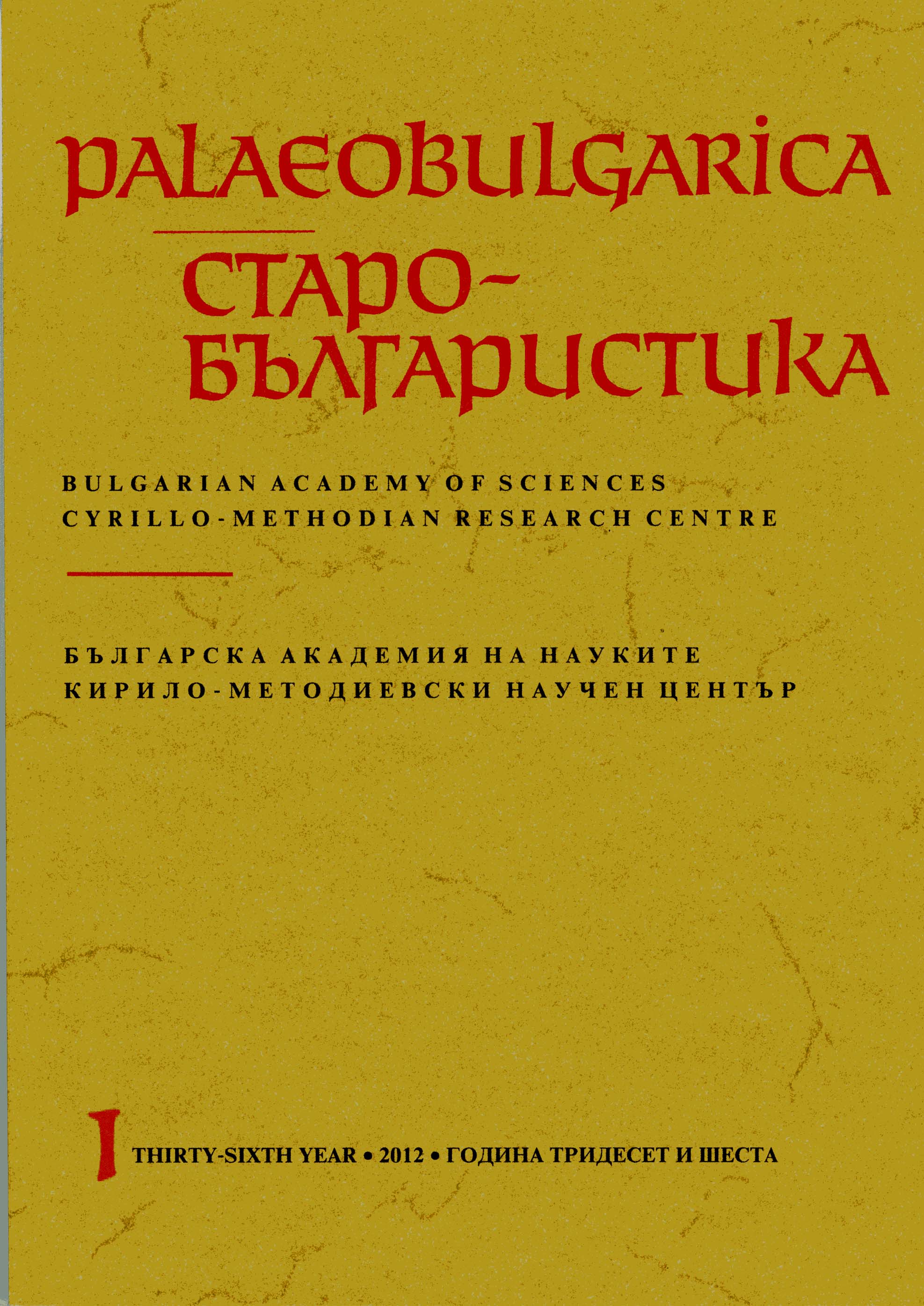Ранние редакции древнейшего славянского перевода Акафиста Богоматери как пример славянского акростиха
The Early Version of the Oldest Slavonic Translation of the Akathistos Hymnos – Another Example of a Slavonic Acrostic
Author(s): Tatyana Stanislavovna BorisovaSubject(s): Language and Literature Studies
Published by: Кирило-Методиевски научен център при Българска академия на науките
Summary/Abstract: The present paper deals with the history of the Old Church Slavonic translation of the Akathistos Hymnos, which dates back to the end of the 9th - the very beginning of the 10th с and was probably made by one of the followers of Cyril and Methodius. The oldest version of this translation, which has neither been published nor thoroughly studied so far, is preserved in two manuscripts only: in the so called Safafik Triodion of the 12th—13th с. (Bulgarian, RNB F.n.1.74) and in the Serbian Triodion of the 14th с (RNB F.n.1.68). Apart from these manuscripts a small fragment of the version has been conserved in the Zagreb Triodion – a South Slavonic manuscript of the 13th с (HAZU IVdl07), where it is contaminated with later text versions. The most interesting feature of this oldest version is the Slavonic alphabet acrostic which tries to replicate the acrostic of the Greek text - a unique phenomenon in translated Slavonic hymns with a fixed number of strophes as opposed to the text acrostic. The Greek Akathistos has 24 strophes (oikoi), which correspond to the 24 letters of the Greek alphabet, representing the philosophical concept of the text being equivalent to the whole universe. Since the Slavonic alphabet has more letters, the translator is left with two options. The first option is to keep the number of the strophes at 24, and to assign them to the first 24 letters of the Slavonic alphabet. The second one is to increase the number of strophes making it equal to the number of the letters of the Slavonic alphabet. Both options seem to have their weak points - in the first case the philosophical aspect of the acrostic fails to be represented, while the second leads to significant changes in the structure of the text. The results of our investigation show that the translator chose the second solution. The presence of two pairs of repeated oikoi in the text of the Serbian Triodion with slight differences in their first lines leads us to the conclusion that the increased number of strophes was achieved by the repetition of the same oikos with small changes at the beginning in order to adjust them to their place in the acrostichic structure. The other techniques the translator used in order to create the Slavonic acrostic included the change of the order of oikoi of the Greek hymn and the addition of certain words depending on the acrostic letter in the beginning of the strophes. All these significant changes resulted in the hymn with a number of oikoi corresponding to the number of letters of the Slavonic acrostic (certainly more than 26, the exact number of letters in the Slavonic alphabet acrostic not being clear and differing from text to text) without any logical coherence between them. The text in fact stops to function as a unit and splits into separate strophes with the acrostic being the only element keeping them together. None of the manuscripts under analysis preserves the old acrostichic translation in its initial form. During the three centuries that passed between the translation and the oldest preserved manuscripts it was subject to several revisions. The evidence demonstrates that the texts of the three manuscripts under investigation are the result of revisions performed independently. However, the main goal of these revisions was the same in all three cases to reduce the number of oikoi in the Slavonic text to 24 - in other words, to make it correspond to the number of the Greek original. The independent revisions demonstrate a general tendency towards greater precision in the translation of the literal content of the Greek text giving preference to rhetoric means – a tendency which starting from this time prevailed in Church Slavonic translations. In all the cases the revisers introduced only superficial changes. It seems likely that they did not have the necessary skills to carry out a more thorough revision. In the Safafik and the Serbian Triodion the only revision seems to be the reduction of the number of oikoi and – sometimes – the removal of the additional initial acrostic words. The texts of the oikoi themselves are not revised at all. One may suppose that these two revisions were performed without any other Slavonic source (i.e., without using the text of any other Slavonic version of the hymn). The Greek original, if used, was not properly read and understood. On the other hand, the changes introduced in the Zagreb Triodion reveal that a later version of the text - the so-called GIM version – was used as a source for certain revisions – a fact that speaks in favour of the South Slavonic origin of the version.
Journal: PALAEOBULGARICA / СТАРОБЪЛГАРИСТИКА
- Issue Year: 2012
- Issue No: 1
- Page Range: 66-79
- Page Count: 14
- Language: Russian
- Content File-PDF

